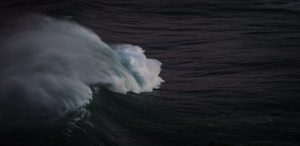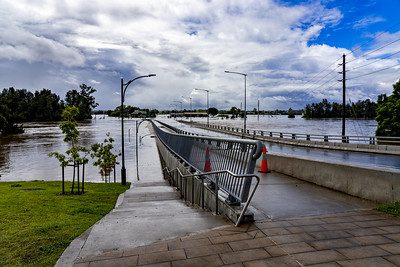East Coast Floods 2022
Devastation in recent months along the east coast as a result of floods is not new. Back in 1974, Moss Cass, Minister for Environment in the Whitlam Government, pronounced in no uncertain terms “flood plains are for floods”. He was referring to devastation in Brisbane while conscious of so much harm over decades had occurred in Queensland and NSW river valleys going back to early settlement years. Lessons learnt from that history have been painful. That pain will be repeated as the new climate era takes effect if we continue to foster development (or redevelopment) on such flood prone lands without careful planning. But reducing harmful effects has not and will not be without pain. Here I will touch on some responses to past floods to highlight difficulties faced by governments in mitigating risk to those living and working in such threatened lands.
Impacts of recent repeated flood events have hurt many towns, villages, and farm properties in northern NSW and SE Qld. My wife, Irene, has been a member of Red Cross recovery teams on two occasions this past month. She has observed the trauma and hurt experienced by many. She obtained for me copies of the Byron Bay Echo paper and the Nimbin GoodTimes, both of which contain extraordinary accounts of what locals feel now and see as needed going forward. Articles are headed “Flood warnings systems fail again”, “Drowning in climate inaction”, “Buyers beware of developments on a 1 in 100-year flood”, “Controlling Lismore floods is possible if the will is there”, “We cannot engineer our way out of climate change”, “Saving the animals”, and so on. These papers are full of accounts and views on both the current crisis and on fears for the future. Yet going back 100 years or more similar horrific and tragic events have occurred and it could be argued that much more could have been done to reduce vulnerabilities.
I am indebted to the writings of many who have studied east coast flooding and do not pretend to know the answers to the many dilemmas facing the communities and the new Reconstruction Authority set up by the NSW Government to reduce future flood threats. In this blog I will name just two expert sources. Chas Keys served as Deputy Director General of the NSW State Emergency Service from 1997 to 2004. In March he wrote three powerful articles in the Pearls and Irritations (P&I) web site on floodplain history and management (March 8, 10 and 29, 2022). They are all well worth a read. Some years ago I had the pleasure of examining a Southern Cross University PhD thesis by Mitch Tulau. Mitch has long been associated with studies on east coast natural resource management. In the thesis he discussed the history and impact of flood mitigation schemes. Aspects of that work will be summarised below. I am grateful to him to be able to cite his work.
Chas Keys focusses on risk in building in flood prone areas. His P&I article of 10 March outlines a very neat A ten-point plan for managing floods. He highlights the need for a multi-pronged approach where we “should recognise that we must learn to live with floods because they are inevitable and unconquerable, requiring us also to seek to modify communities and community behaviour as well as floodwaters”. Floods should not be seen just as enemies to overcome. Mitigation by way of structures has a role noting that levees can be overtopped with disastrous consequences. There must be more education and a willingness to plan (land use and household-based) identifying in advance what should be done where and how.
In managing land use on floodplains he queries the application of criteria based on a one-in-100-year event: “A better approach is to use risk rather than a statistically-derived abstract flood level as the fundamental criterion, and to be more conservative in decision making than is usually the norm under the current numerically-based approach”. Planners and decision-makers must be prepared to reject development at higher levels than at present. I was pleased to see similar thoughts in the article in the April edition on The Nimbin GoodTimes by Jim Beatson citing advice from the Office of the Queensland Chief Scientist and the experience of the Gympie Regional Council. The article pointed to a common planning problem whereby it is difficult in future to place additional requirements on already approved developments even if certain flooding benchmarks change. He noted potential issues will arise with the recent approval of “mega development” of the West Byron DA being based on what he called “the same gob-smacking legal logic”.
Mitch Tulau adopts an historical perspective in his study of east coast flooding and its consequences. One time period of interest covered the 1960-1970s. He examined the interplay between federal and state governments in their respective engagements with local communities. It was a difficult period in federal politics as the Coalition held a one seat majority. Up till then they and Labor had resisted calls to fund what was termed “flood mitigation” —it was seen as a state responsibility! This position was taken as far back as 1949 after Lismore had been devastated. However, subsequent east coast floods in 1950s and 60s witnessed further demand for mitigation help as distinct from “flood relief” funding.
There was a debate locally about the respective needs for an “upriver” (dam) or “down-river” approach (drain) to flood mitigation. The loss of the long-standing member of the Coalition (Sir Earle Page) to Labor created a dilemma for the Menzies Government who could see the ALP inflicting political damage if they did not act. The Prime Minister in May 1963 inspected the flooding on the Richmond with the local Labor member, a “down-river” advocate, and under pressure reached the following decision to support flood mitigation: “The northern rivers section…involves a six-year programme, and we have agreed that we will make the matching funds requested by the State Government during the six years required for the work” (Hansard, House of Representatives, 17 October, 1963, p.1917).This involved special legislation supported by Labor in March 1964 (NSW Grant (Flood Mitigation) Bill 1964) justified “because of the great national benefits that would flow from the speedy implementation of the flood mitigation programmes” (Harold Holt, Treasurer, H of Rep, Hansard, 4 March, 1964, p.291). Opposition Leader Gough Whitlam noted “Seldom has the advocacy of one member produced such quick and dramatic results”, (H of Rep, Hansard, 11 March 1964, p.488). Federal legislation on a specific single state water responsibility is quite rare.
The Commonwealth supported two six-year programs ending in 1976. It embraced a number of NSW north coast rivers with expenditure available for flood mitigation works including dredging floodways and construction of flood gates. Tulau details much of what occurred during this period and it is interesting to read his conclusions. One is that had the outcome of the 1961 Federal election not been as close as it turned out to be, “it is unlikely that the impacts of the flood mitigation schemes on the floodplain backswamps would have been so profound”. This touches on what may happen with a “hung” Parliament! But the relevance of this view is tied to his second conclusion: “the 1950-70s flood mitigation schemes were overwhelmingly swamp drainage schemes”. Although devastation in towns such as Kempsey in 1949, Maitland in 1955 and later Lismore and Grafton attracted the attention of state and federal governments to the issue of flood mitigation, few of the funds were made available to local councils to protect towns and other infrastructure. The major beneficiary was intended to be floodplain agriculture, mainly the dairy and sugar industries. But after this extended period of frequent floods a period dominated by droughts set in; the swamps started to dry out along with lowered groundwaters. A new environmental problem arose, namely that of acid sulfate soil activation. Here is another story with its consequences.
Bruce Thom
Words by Prof Bruce Thom. Please respect the author’s thoughts and reference appropriately: (c) ACS, 2022. For correspondence about this blog post please email austcoastsoc@gmail.com
#214



 East Coast Weather ‘Traffic Jam’
East Coast Weather ‘Traffic Jam’